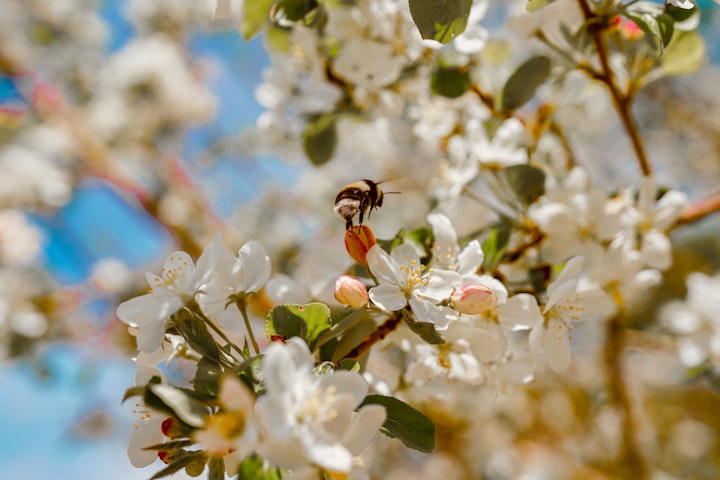
Kiwi, also known as Chinese gooseberry, is a fruit that is native to China. It was first introduced to New Zealand by Chinese missionaries in the early 20th century. Today, kiwi is a popular fruit worldwide, known for its unique flavor and high nutritional value. Kiwi is grown commercially in many countries, including Italy, Chile, New Zealand, and the United States.
The kiwi plant is a deciduous vine that can grow up to 30 feet long. It has a woody stem that is covered with fine, hair-like roots. The plant produces small, white, fragrant flowers in early spring, which are followed by oval-shaped fruits in late summer or early fall. The fruits are about the size of a large egg and have a brown fuzzy skin. Inside, the flesh is bright green and juicy, with small black seeds.
Kiwi grows best in temperate climates with cool, wet winters and warm, dry summers. It can be grown in different types of soil, but thrives in well-drained, nutrient-rich soil. Kiwi is a dioecious plant, which means it has separate male and female plants. The male plants produce pollen, while the female plants produce the fruit. A ratio of one male plant to every eight female plants is recommended for commercial production.
Kiwi plants are propagated by seeds or cuttings. Seeds can be germinated by placing them in a damp paper towel and keeping them in a warm, dark place for several days. Once the seeds have sprouted, they can be transplanted into a potting soil mixture and grown indoors under artificial light until they are large enough to plant outside. Cuttings can also be taken from mature kiwi plants and rooted in water or soil.
Kiwi plants require regular watering, fertilization, and pruning to produce a good crop of fruit. They should be watered deeply every 7-10 days in the summer, and less frequently in the winter. Fertilizer should be applied every 4-6 weeks during the growing season, with a balanced mixture of nitrogen, phosphorus, and potassium. The plants should be pruned in late winter to remove any dead or diseased branches, and to encourage new growth.
Kiwi plants take 4-6 years to reach maturity and produce fruit. The fruit is harvested by hand in late summer or early fall, when it has reached its full size and the skin is slightly soft to the touch. Once harvested, the fruit can be stored at room temperature for up to a week, or in a refrigerator for up to a month. Kiwi is a highly nutritious fruit, with high levels of vitamin C, fiber, and potassium. It is also low in calories and has been shown to have anti-inflammatory and antioxidant properties.
In conclusion, kiwi is a fascinating plant that produces a delicious and nutritious fruit. It can be grown in many different countries and climates, with proper care and attention. Kiwi plants can be propagated from seeds or cuttings, and require regular watering, fertilization, and pruning to produce a good crop of fruit. Once harvested, kiwi can be stored for several weeks and enjoyed as a healthy snack or incorporated into a variety of recipes.
Kiwi, also known as Chinese gooseberry, is a fruit that is native to China. It was first introduced to New Zealand by Chinese missionaries in the early 20th century. Today, kiwi is a popular fruit worldwide, known for its unique flavor and high nutritional value. Kiwi is grown commercially in many countries, including Italy, Chile, New Zealand, and the United States.
The kiwi plant is a deciduous vine that can grow up to 30 feet long. It has a woody stem that is covered with fine, hair-like roots. The plant produces small, white, fragrant flowers in early spring, which are followed by oval-shaped fruits in late summer or early fall. The fruits are about the size of a large egg and have a brown fuzzy skin. Inside, the flesh is bright green and juicy, with small black seeds.
Kiwi grows best in temperate climates with cool, wet winters and warm, dry summers. It can be grown in different types of soil, but thrives in well-drained, nutrient-rich soil. Kiwi is a dioecious plant, which means it has separate male and female plants. The male plants produce pollen, while the female plants produce the fruit. A ratio of one male plant to every eight female plants is recommended for commercial production.
Kiwi plants are propagated by seeds or cuttings. Seeds can be germinated by placing them in a damp paper towel and keeping them in a warm, dark place for several days. Once the seeds have sprouted, they can be transplanted into a potting soil mixture and grown indoors under artificial light until they are large enough to plant outside. Cuttings can also be taken from mature kiwi plants and rooted in water or soil.
Kiwi plants require regular watering, fertilization, and pruning to produce a good crop of fruit. They should be watered deeply every 7-10 days in the summer, and less frequently in the winter. Fertilizer should be applied every 4-6 weeks during the growing season, with a balanced mixture of nitrogen, phosphorus, and potassium. The plants should be pruned in late winter to remove any dead or diseased branches, and to encourage new growth.
Kiwi plants take 4-6 years to reach maturity and produce fruit. The fruit is harvested by hand in late summer or early fall, when it has reached its full size and the skin is slightly soft to the touch. Once harvested, the fruit can be stored at room temperature for up to a week, or in a refrigerator for up to a month. Kiwi is a highly nutritious fruit, with high levels of vitamin C, fiber, and potassium. It is also low in calories and has been shown to have anti-inflammatory and antioxidant properties.
In conclusion, kiwi is a fascinating plant that produces a delicious and nutritious fruit. It can be grown in many different countries and climates, with proper care and attention. Kiwi plants can be propagated from seeds or cuttings, and require regular watering, fertilization, and pruning to produce a good crop of fruit. Once harvested, kiwi can be stored for several weeks and enjoyed as a healthy snack or incorporated into a variety of recipes.






Comments
Maryann is not accepting comments at the moment
Want to show your support? Send them a one-off tip.